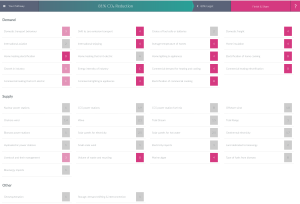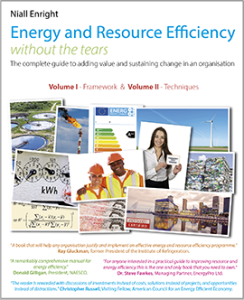 As part of the update of my book, and in preparation for a two-day energy management training course I am delivering shortly, I revisited the 2050 pathways model for decarbonisation of the UK economy by 80% by 2050.
As part of the update of my book, and in preparation for a two-day energy management training course I am delivering shortly, I revisited the 2050 pathways model for decarbonisation of the UK economy by 80% by 2050.
I took the plunge and completed my own 2050 scenario, achieving an 81% reduction, summarised in the actions illustrated above. My model is heavily focused on the demand-side, as you can see from the red colours in the upper section of the screenshot above. This brings home the fact that no matter how many wind-farms we put up, unless we change our heating and transport to electricity, the supply-side changes will have little effect.
One particular quandary I had was how much land to dedicate to biomass. When I reached 78% emissions reductions, one of the few remaining ways to reach the 80% target was to increase the land use for biomass from 5% to 10%, or start to import biomass, neither of which I wanted to do. In the end, I achieved the target by turning down the average temperature in homes beyond what I really think is feasible. These kinds of decisions bring home the complexity of the energy system and the fact that no single technology can achieve the goal.
The model also attempts to quantify the cost impact of the selections. In the “do nothing” model the annual cost of energy would be around £4,500 per person per year, whereas in my model it will rise to around £5,500 to pay for all the new infrastructure. These are only the direct effect – as the model states, the Stern Review estimated that the lost GDP due to climate change could amount to £6,500 a year.
I thoroughly recommend this tool for its powerful illustration of the complex trade-offs needed to achieve substantial emissions reductions. And it’s fun!



0 Comments